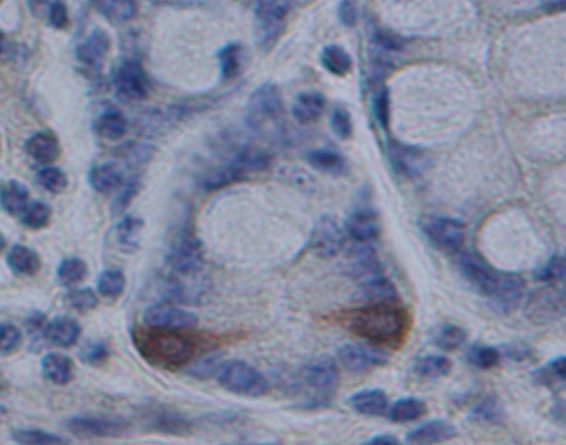NEW TARGETS FOR REDUCING IN-FEEDS ANTIBIOTICS
The massive use of antibiotics in feed, especially in the pig industry, contributed to the onset of antibiotic resistance. To find efficient and safe alternatives it is necessary to pursue a better knowledge of the physiology of the digestive system. With this publication, selected as article of the month by the journal Animal, the research group led by Fulvio Gandolfi, professor of anatomy and physiology at DiSAA, helped to identify new targets for limiting the use of antibiotics in feed. The group of researchers has characterized for the first time the evolution of the intestinal stem cells of pig intestinal mucosa between birth and weaning, demonstrating the presence of two cell types, one formed by a few cells that rarely divide and another that instead proliferates very actively. In pigs, both cell types are located at the base of the crypts, along the villi and on the luminal epithelium of the colon. The stereological analysis revealed that weaning induces a reduction of the two populations and that the active ones suffer a significantly greater reduction in the small intestine than in the colon, suggesting that the two types of stem cells are regulated differently along the intestinal tract. Stem cells are responsible for defending and renewing the intestinal mucosa, but information on where they are and how they work in domestic species is practically absent. The results of this work are particularly important and innovative because intestinal stem cells and the molecules that regulate their function are very promising targets for the development of new molecules suitable for replacing antibiotics.
Figure: brown cells are quiescent stem cells located in the intestinal crypt and identified through the use of a specific antibody.
REFERENCE
Verdile, N., Mirmahmoudi, R., Brevini, T., & Gandolfi, F. (2019). Evolution of pig intestinal stem cells from birth to weaning. Animal, 13(12), 2830-2839. doi:10.1017/S175173111900131.
POSSIBLE NOTES
The article is free available during this month at the following link:

